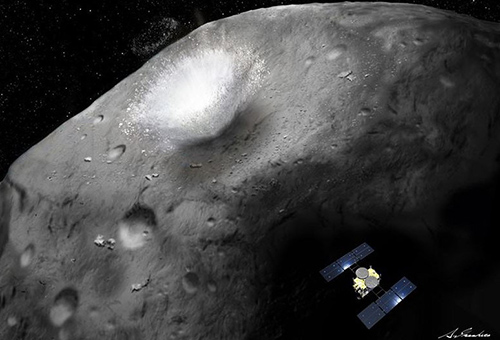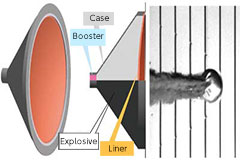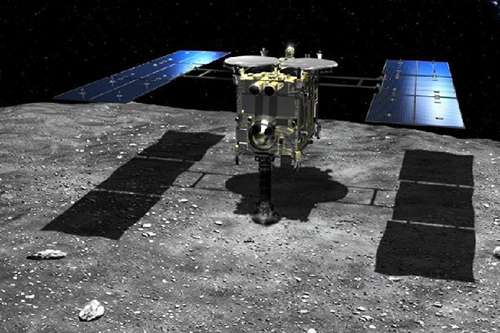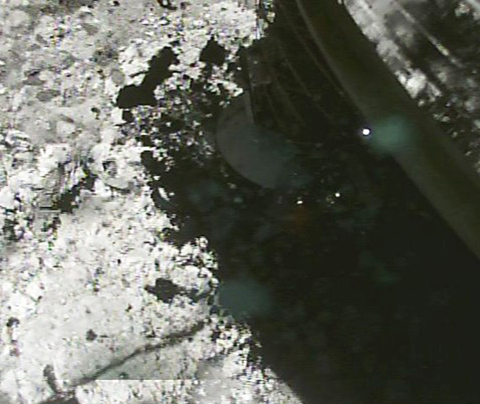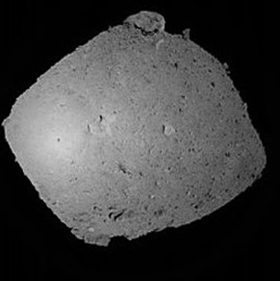News
Hayabusa 2 Succeeds in Using Impactor to Create an Artificial Crater on Asteroid Ryugu - Collecting Rocks from the Crater may Reveal More Facts about our Solar System Updated in June 2019
After Japan’ s spacecraft Hayabusa 2 successfully landed on the small asteroid Ryugu, it has been waiting for its next mission near the surface of the asteroid. On the morning of May 5, The Japan Aerospace Exploration Agency (JAXA) announced that Hayabusa 2 separated a collision device to create an artificial crater on the asteroid. This collision device fired bullets on the surface of Ryugu. Having succeeded in creating the artificial crater, Hayabusa 2 landed on Ryugu again to collect rocks below the surface of the asteroid for the first time in the world.
According to Hayabusa 2’s control team, the spacecraft had descended to an altitude of 500 meters at 10:56 am and separated the collision device (SCI: Small Carry-on Impactor). This cylindrical device is equipped with a round copper plate at its end. 40 minutes after the separation, energy from an intentionally timed explosion turned the metal plate into a bullet. This copper bullet directly hit the surface of the asteroid to make a crater. To avoid flying fragments from the explosion, Hayabusa 2 evacuated to the backside of the asteroid.
The targeted point for the crater was several hundred meters away from the landing point in February 2018, near the asteroid’s equator. The crater is supposed to be about 10 meter in diameter and 1 meter deep in order to expose parts of the asteroid below ground. The speed of the bullet upon collision was about 2 kilometers per second and its weight was about 2 kilograms. If conditions are good, the crater’s diameter could become a few meters long. If all experiments related to the crater are complete, Hayabusa 2 shall re-land inside or around the crater sometime in May to look for underground rocks.
It is believed that there are traces from the birth of the solar system on Ryugi which are already lost on Earth. The surface of the small celestial body has already been weathered due to the solar winds and other factors. That is why an artificial crater is made to collect evidential underground rocks. The series of experiments will be filmed with a separable camera and the images will be forwarded to Earth via Hayabusa 2.
Hayabusa 2 had landed on Ryugu, 300 million kilometers away from Earth on June 2018. It succeeded in landing on a 6-meter wide spot near the equator and flew back up above the surface to prepare for this crater experiment. From observation above the asteroid, the team consisting of JAXA and the University of Aizu (UoA) announced that there are minerals rocks containing water on Ryugu. This observation was announced on the electronic version of Nature dated March 19, 2018.
Hayabusa 2 is the successor to Hayabusa which managed to pick up and collect rocks from the asteroid Itokawa in 2005. Hayabusa 2 weighs about 600 ki8olograms. Its propulsion unit consists of an ion engine, and is equipped with an optical camera and a laser altimeter, plus cutting-edge devices and a landing machine. It was launched in December 2014 by an H2A rocket from Tanegashima Space Center in Kagoshima Prefecture. A years after orbiting the earth, it approached the Earth again in close proximity to make us of the Earth’s gravity to change direction towards the sun. This use of gravity is called “Earth swing-by.” After traveling for about 3.2 billion kilometers, Hayabusa 2 had finally reached the skies above Ryugu on June 27 last year. It will conduct various probes during November-December this year. After the missions are completed it will travel back to Earth and will drop a capsule containing samples in the Australian desert by the end of 2020.
Ryugu is an asteroid that travels around the Earth in a little more than a year, bypassing the Earth and Mars orbits. It was discovered in 1999. Through observations by Hayabusa 2, it has been revealed that Ryugu is shaped like a diamond or an abacus ball. It is about 900 meters wide. Its distance between the Earth is changeable but now it is about 300 million kilometers apart. The size of Ryugu is about twice as large as Itokawa. There were rocks containing water and organic matter, and Itokawa has more traces from the primordial or primitive state of our solar system.
